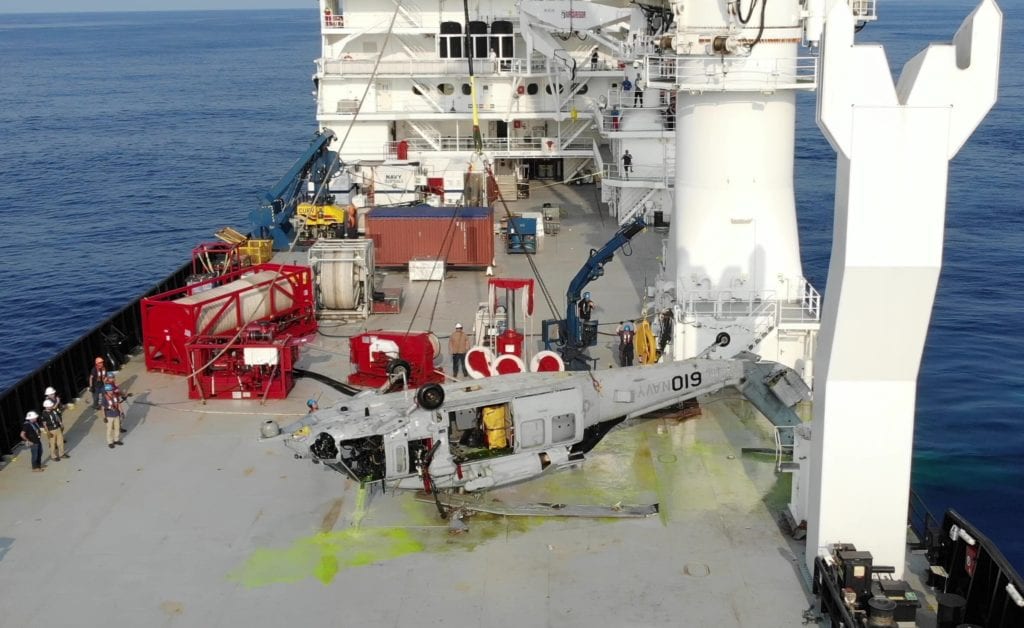
NORTH PACIFIC — The Naval Sea Systems Command’s (NAVSEA’s) Supervisor of Salvage and Diving (SUPSALV) recovered a downed Navy MH-60S helicopter from a depth of 19,075 feet off the coast of Okinawa, Japan, March 18, the Naval Sea Systems Command Office of Corporate Communication said in a March 22 release.
The helicopter, a twin-engine Sikorsky Seahawk, crashed into the Pacific Ocean last year while operating from the amphibious command ship USS Blue Ridge (LCC-19). The air crew was able to escape the MH-60S before it sank, and no lives were lost in the accident.
Responding to a U.S. Pacific Command Fleet request, SUPSALV located and documented the wreckage using side-scan sonar and photographs of the helicopter as it lay on the ocean floor during North Pacific operations last spring.
SUPSALV returned to the site this month at the request of the Navy Safety Center with CURV 21, a deepwater remotely operated vehicle with the ability to meet deep ocean salvage requirements to a maximum depth of 20,000 feet.
The SUPSALV team met the contracted salvage vessel in Guam, completed mobilization of CURV and its deep-lift take-up reel, and departed for the five-day transit. Arriving on the crash site March17, the team began recovery operations. Pulled from its depth of 19,075 feet below sea level, the MH-60S’s recovery broke SUPSALV’s own world depth record for an aircraft recovery.
The salvage vessel will proceed to Fleet Activities Yokosuka where the MH-60S will be offloaded for transport back to the United States.
“As a whole, this operation was fast-paced and entirely successful,” said Bryan Blake, SUPSALV’s Deep Ocean program manager. “Our efforts validated the Navy’s deep ocean search-and-recovery requirements. The capability to recover the airframe and make it available to determine the cause of the accident is a huge plus helping to ensure Naval Aviation safety.”
The Navy’s Supervisor of Salvage and Diving provides technical, operational and emergency support to the Navy, Department of Defense and other federal agencies in the ocean engineering disciplines of marine salvage, towing, pollution control and abatement, diving and diving system safety and certification, diving and salvage equipment procurement, and underwater ship husbandry.
- U.S. Coast Guard Cutter Anacapa decommissioned after 34 years of service - April 29, 2024
- Commander Marforpac Visits Palau - April 29, 2024
- April 28 Red Sea Update - April 29, 2024






